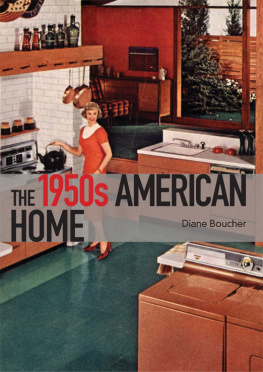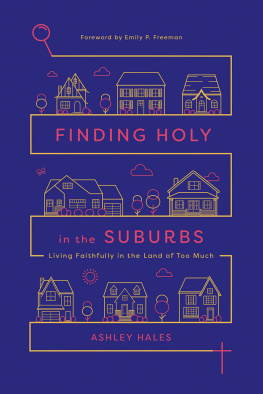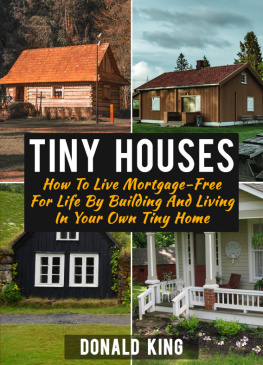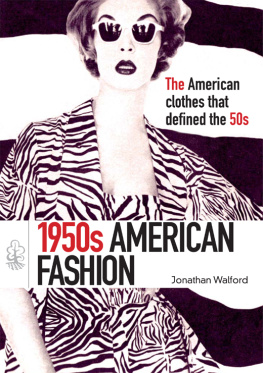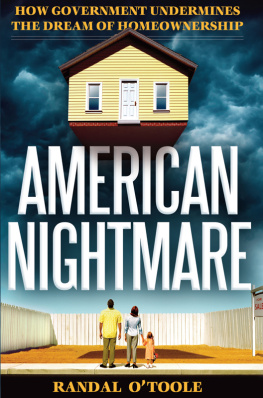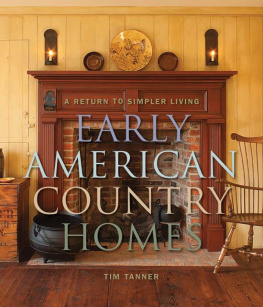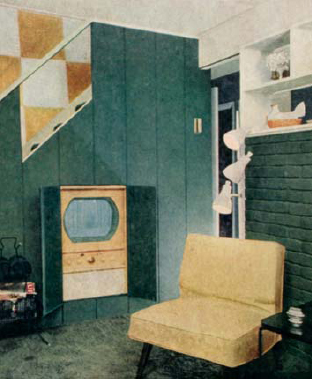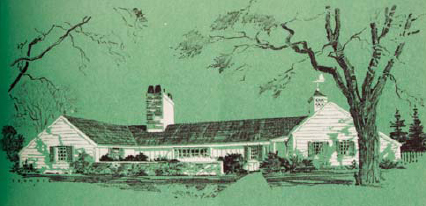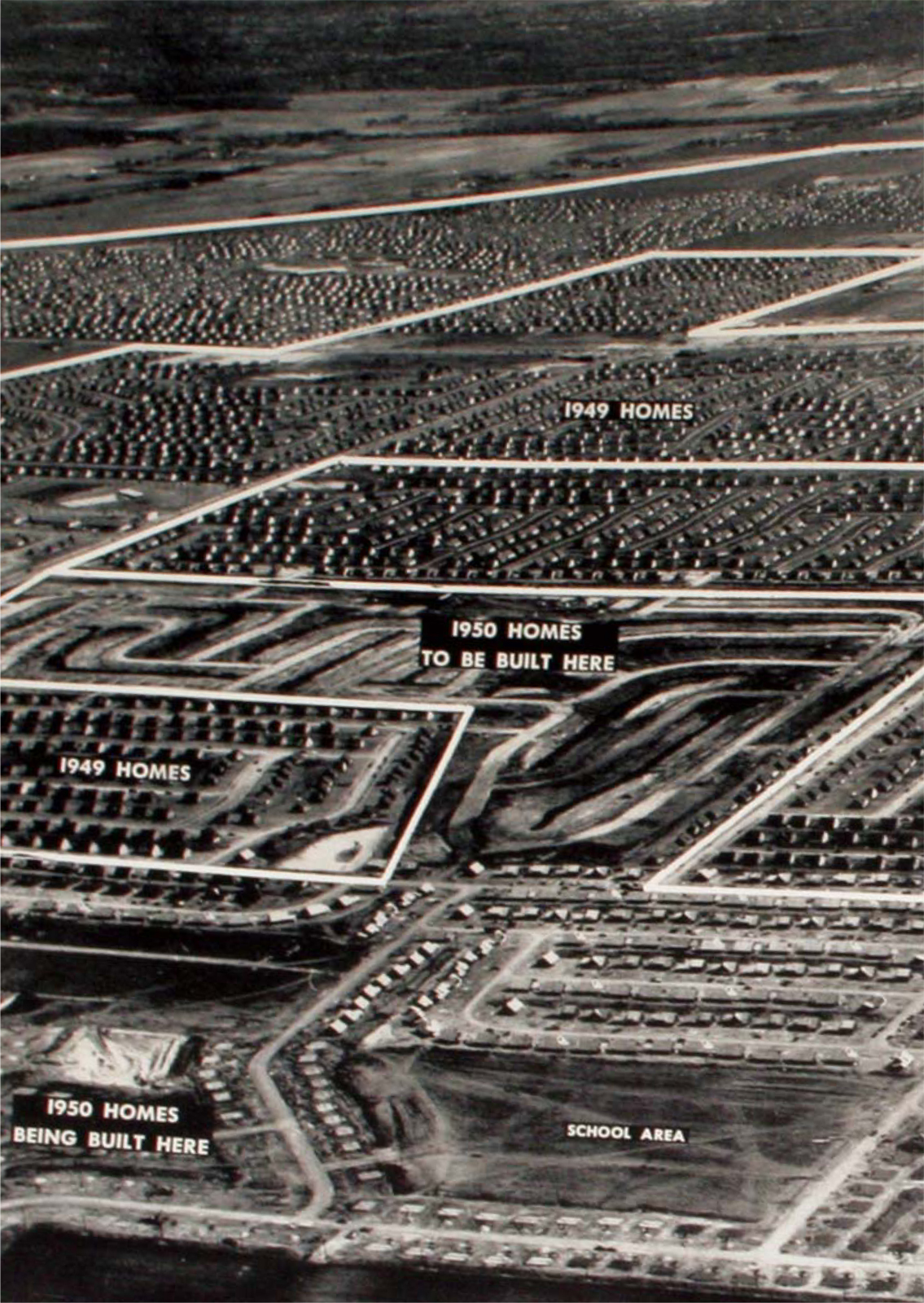THE 1950s AMERICAN HOME
Diane Boucher
Mr. and Mrs. Thomas Hagen were awarded third prize in the Levittown interior design competition for a smart big city interior right in the center of the development.
SHIRE PUBLICATIONS
There are so many people that like the simple symmetrical lines of the little Cape Cod house. Frankly quaint, cozy and unafraid, this little house sits behind its wall and picket fence giving built-in privacy. Illustration from Royal Barry Wills, Living on the Level: One Story Houses (1954).
CONTENTS
Levittown was to be called Island Trees, but the development, which was built on flat potato fields, had few surviving trees.
A CLEAN BREAK: ACHIEVING THE AMERICAN DREAM
I N 1950 Bernard Levey purchased a house in the new suburban community of Levittown some 25 miles outside of New York City for $7,950. For Mr. Levey, a veteran of World War II and a truck supervisor, this was to be his third home in Levittown. Together with his wife and three young children, he had rented a house in 1948 under the federal governments Veteran Rental Project, to see if they liked it. In 1949, the Leveys bought their first home, a semi-modern, with the help of a generous loan from the US Department of Veteran Affairs. The family was now upgrading to the 50s model, a ranch-style, which came with the latest innovations, including a carport and a built-in television.
America in the 1950s heralded a bright future for World War II veterans like Bernard Levey, following years of economic uncertainty during the Great Depression and the war. Ironically, it was the war itself that set the stage for the new age of prosperity. The United States had invested an unprecedented $300 billion in military spending during the war years. American industry had merely to retool the armament factories to produce cars and refrigerators rather than warplanes and battleships. This gave industrial production an immense stimulus and resulted in the worlds richest and most modern economy.
In 1944, the federal government introduced the Servicemens Readjustment Act, popularly known as the GI bill, which provided a range of benefits to the sixteen million returning World War II veterans. It enabled 6.4 million newly demobilized soldiers to further their education, either at high school, on vocational courses or in college. In addition, the veterans had access to loans to start a new business or farm and they had recourse to the governments mortgage program, which offered low-cost, zero-down home loans. Thanks to the GI bill, America began the postwar period with an educated and stable workforce with access to cheap home financing and business loans. The result was to fundamentally change the aspirations of the majority of the population, giving rise to a consumer society that could afford a way of life Americans could only have dreamt of during the years of economic depression and war.
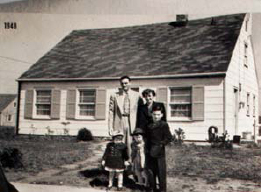
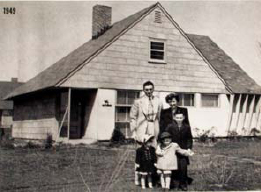

According to Life magazine, which featured the Levey family posing in front of their three homes, Levittowners could buy a new house every year as they would a new car and when the 51s come along, they may buy again.
Many of the newly returning soldiers, encouraged by a healthy job market and an optimistic sense of the future, were eager to date, marry, and start a family. Couples married in record numbers. In 1940, 31 percent of the population was single; by 1950 the number had fallen to 23 percent. They also married at a much younger age: during the 1950s, the median age of men when they married dropped from 24.3 years to 22.6 and for women, from 21.5 to 20.4 years. By 1959, 47 percent of all brides were married by the age of 19. Once married, most couples began their families almost immediately. The average family had 3.2 children, with the most educated women leading the new trend. This had enormous repercussions for the American birthrate: more children were born between 1948 and 1953 than had been born over the preceding thirty years, and 1954 saw the largest one-year population gain in US history. In 1950, the US population was 151.7 million; by 1960 it has risen to 180.7 million. The phenomenon became known as the baby boom, and Levittown was widely referred to as fertility valley or the Rabbit Hutch.
These growing families needed places to live, but in the immediate postwar period homes were in critically short supply. During the Depression and the war, housing starts had fallen drastically, creating a situation where young couples and their children often lived with their parents and other relatives in crowded urban apartments or sometimes in pre-fabricated housing known as Quoinset huts.
The answer to the housing crisis was a mass migration from the cities to newly built developments. Fortune magazine estimated that between 1944 and 1954, nine million people moved to the new suburbs. They were typically built on cheap abundant farmland and underwritten by considerable federal funding for new housing construction and the veterans access to inexpensive home mortgages. In 1945, only 200,000 new houses were built nationwide; this rose to 1,154,000 in 1950. For the first time in American history, home ownership became a reality for ordinary people. Traditionally, suburban living had been the preserve of the wealthy, but in the newly built suburbs, the median price of a house was $5,000, roughly equivalent to an average familys wages for two years, and far more affordable than property in most cities. From 1950, eighteen of the nations major cities saw a loss in their population, with some sixty million people moving to the suburbs over the next thirty years.

In the early 1950s, the new suburbs were largely populated by young families with stay-at-home mothers and fathers who spent long days away from the home, commuting to their workplace in the cities.
For young couples, the main appeal of suburban life was that the suburbs provided a safe, pleasant place to rear children at affordable prices. The air was clean and the sidewalks safe for bicycles. Many of the developments included good local schools, playgrounds, parks, public swimming pools and baseball fields. In his memoirs of growing up in 1950s Des Moines, Iowa, the writer Bill Bryson recalled that there were kids everywhere, all the time, in densities now unimaginable.
The Levitt Company, run by Abraham Levitt and his two sons, William and Alfred, was by far the most successful postwar suburban developer. They did not pioneer the idea of large-scale tract housing, but they were particularly successful at exploiting the federal governments mortgage program. In March 1949, the first houses in Levittown I a 6,000-acre site in Hempstead, Long Island were offered for sale exclusively to veterans. By 1951, 17,000 units had been built on the Long Island site, housing some 82,000 people and making Levittown I the largest private housing project in American history. The average income of a Levittown homeowner in 1952 was $80 to $100 a week and his house cost him $6168 per month.

